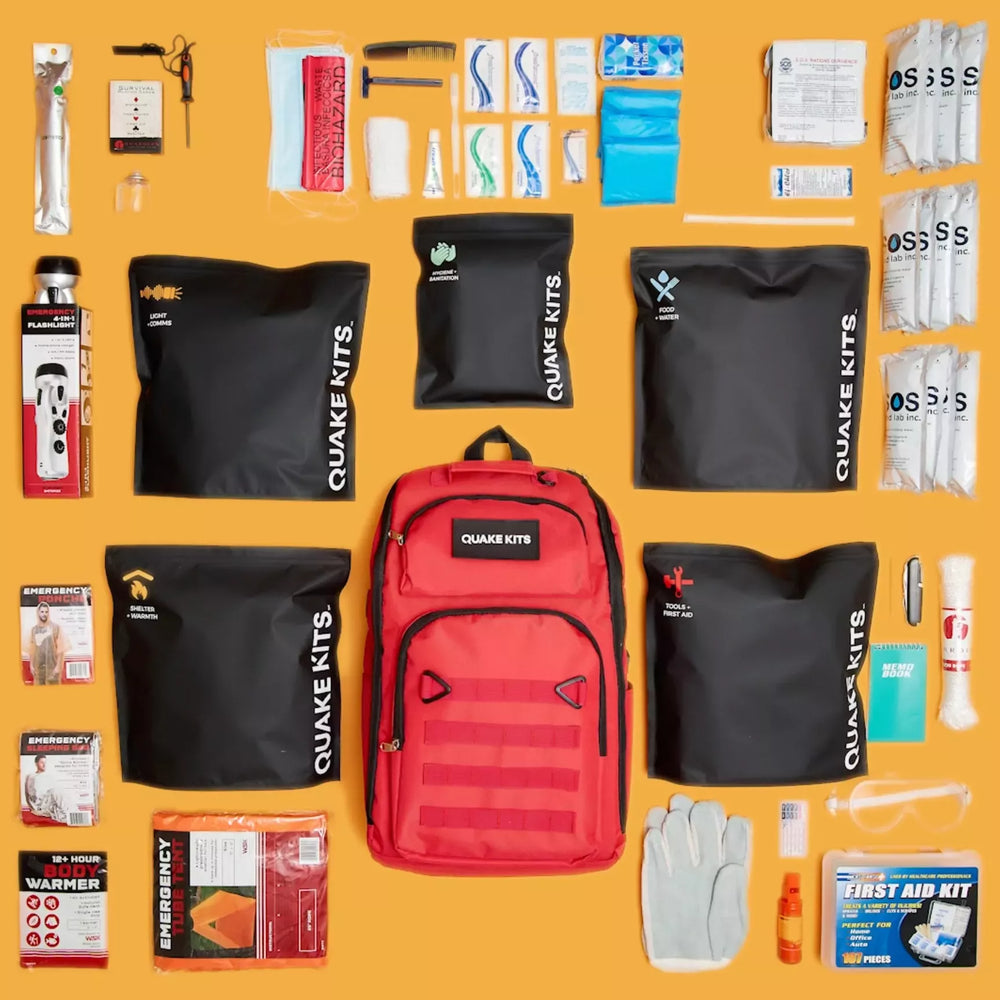Garden to Table: How to Grow a Garden and Prepare Food for Long-Term Storage
Garden to Table: How to Grow a Garden and Prepare Food for Long-Term Storage
In the world of emergency preparedness, knowing how to grow your own food and preserve it for long-term storage are valuable skills. Not only do these practices provide a reliable food source during emergencies, but they can also promote self-sufficiency and reduce your reliance on external supply chains. In this post, we’ll walk through the essentials of starting a survival garden and preparing your harvest for long-term storage.
Essential Gear for Gardening and Food Storage
Let’s start with the key tools and supplies you’ll need to get going:
- Seeds: Heirloom or non-GMO seeds are ideal for a survival garden as they can be saved and replanted season after season.
- Garden Tools: Basic tools like a spade, hoe, watering can, and gloves make the job easier.
- Soil Amendments: Fertilizers and compost enrich the soil, helping your plants grow strong and healthy.
- Storage Containers: Airtight containers, vacuum sealers, and mylar bags with oxygen absorbers are great for long-term food storage.
- Preservation Equipment: A dehydrator, canning jars, and a pressure canner are essential for preserving and storing your food.
Step 1: Start Your Garden
Before planting, it’s essential to set up your garden space:
- Choose Your Location: Find a sunny spot, as most vegetables need 6–8 hours of sunlight daily. Make sure it’s accessible for regular watering and maintenance.
- Prepare the Soil: Loosen the soil and mix in compost or organic fertilizer to enrich it. Aim for soil that drains well but retains enough moisture for plant roots.
- Select Your Crops: Focus on nutrient-dense crops that store well, such as beans, carrots, potatoes, tomatoes, and squash. Leafy greens like spinach and kale are also great, as they can be dehydrated and stored for later use.
- Planting: Follow the instructions on your seed packets for spacing and depth. Keep the soil moist during germination and watch for weeds that might compete with your plants for nutrients.
Fun Tip: Try growing herbs like basil, thyme, and rosemary alongside your vegetables! Not only do they add flavor to your dishes, but many herbs also have natural pest-repellent properties.
Step 2: Harvest and Prepare Your Food for Storage
Once your garden is producing, it’s time to start preparing your food for storage:
- Harvest at the Right Time: Pick your vegetables at peak ripeness for the best flavor and nutritional value. Research each plant to know when it’s time to harvest.
- Wash and Dry: Thoroughly wash and dry your produce to remove dirt, bacteria, and pesticides. Drying is especially important for long-term storage, as moisture can lead to mold and spoilage.
- Preserve Your Harvest: Choose a preservation method based on the type of food and how long you want to store it.
Fun Fact: Some crops, like carrots and potatoes, can be stored directly in a cool, dark place for months. Look into “root cellaring” for easy storage without any special equipment.
Step 3: Food Preservation Techniques
Now that your produce is ready, it’s time to prepare it for long-term storage. Here are a few popular methods:
- Canning: This method is ideal for fruits, tomatoes, and pickles. Using a pressure canner for low-acid foods, like green beans, ensures they’re safe to store. Pack the produce into sterilized jars, process them in the canner, and store them in a cool, dark place.
- Dehydrating: Vegetables like peppers, onions, and tomatoes can be dehydrated for long-term storage. Slice them thinly, place them in a dehydrator, and store them in airtight containers once fully dried. Dehydrated food is lightweight, making it perfect for survival kits.
- Vacuum Sealing and Freezing: Vacuum sealing prevents freezer burn and keeps food fresh longer. If you have access to a freezer, this is a great way to store meat and other perishables.
Fun Use: Experiment with making your own vegetable powders, like tomato or spinach powder. These can be added to soups and stews for extra flavor and nutrients without taking up much storage space.
Step 4: Store Your Preserved Food
Once your food is preserved, store it properly to maximize shelf life:
- Label Everything: Always include the date on your preserved foods, so you know how long they’ve been stored.
- Keep It Cool and Dark: Sunlight and heat can degrade stored food over time. Store your containers in a pantry or basement with consistent temperature and low humidity.
- Rotate Stock Regularly: Use a “first in, first out” system to ensure you consume the older items first and keep your stockpile fresh.
Pro Tip: Oxygen absorbers are essential for long-term storage, especially for dry foods. These small packets absorb oxygen and prevent spoilage by inhibiting the growth of bacteria, mold, and insects.
TL;DR
Growing a garden and prepping food for long-term storage are essential skills for anyone interested in emergency preparedness or self-sufficiency. With a bit of planning and practice, you can create a reliable food source that will sustain you through tough times and provide a rewarding hobby year-round. From planting and harvesting to canning and dehydrating, these techniques are both practical and enjoyable for anyone looking to be prepared for the unexpected.
By mastering these basics, you’ll not only ensure that you have food on hand when you need it, but you’ll also gain valuable skills that promote resilience and independence. So grab those gardening gloves and get started!






Leave a comment